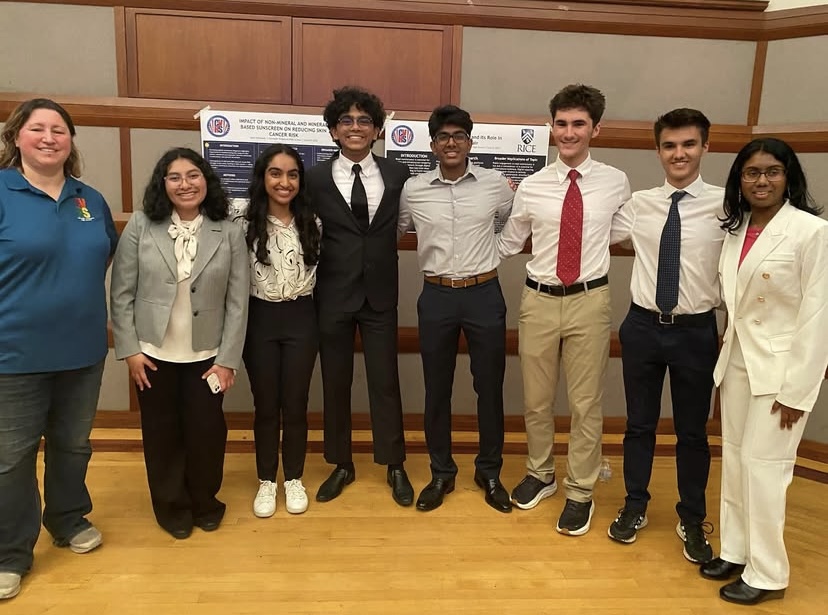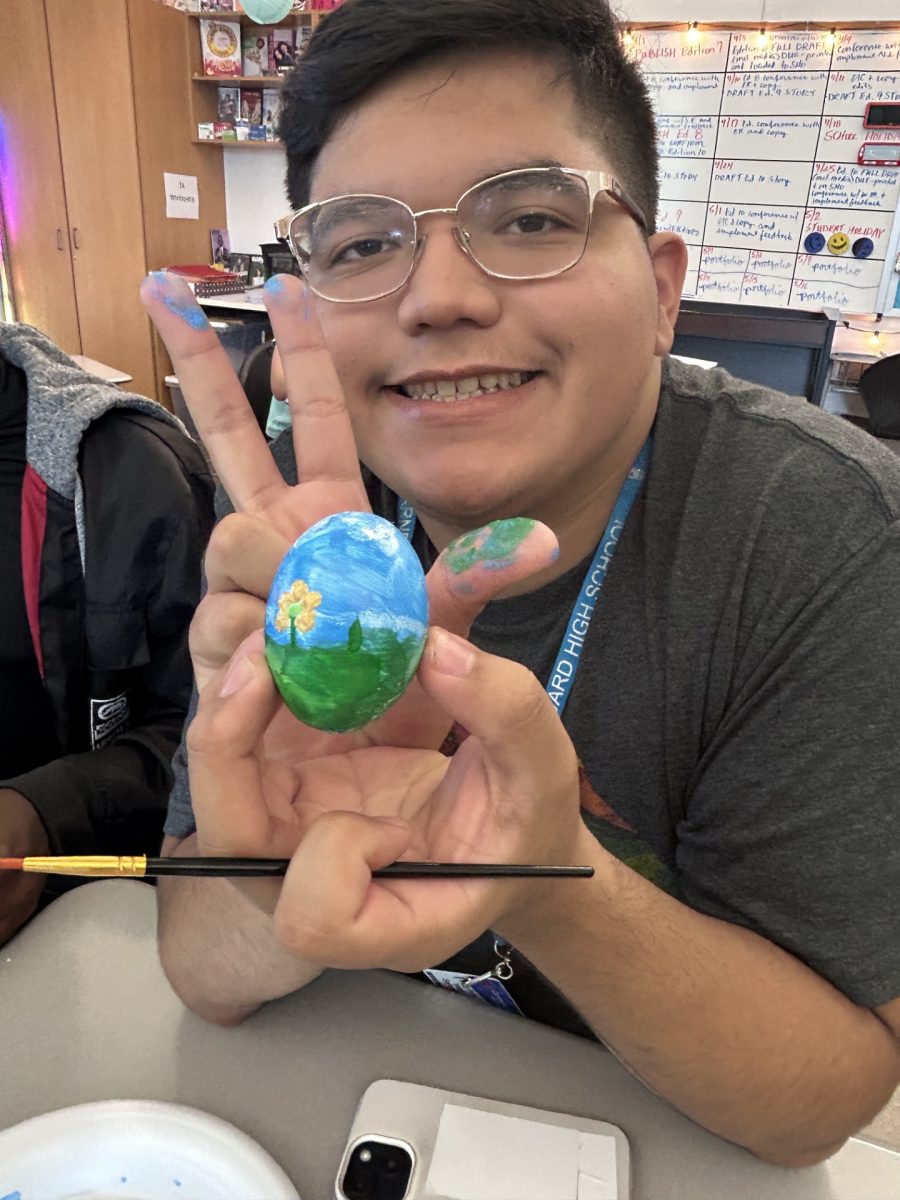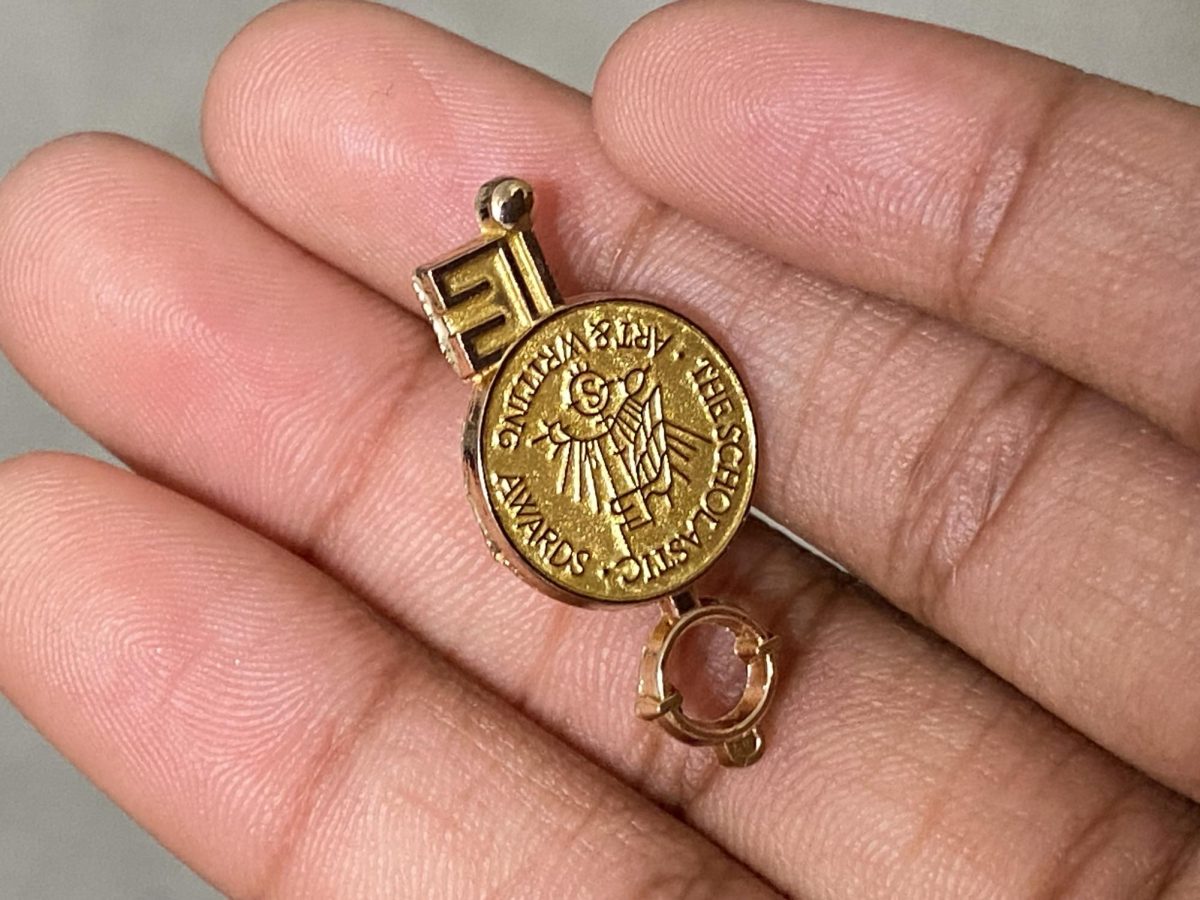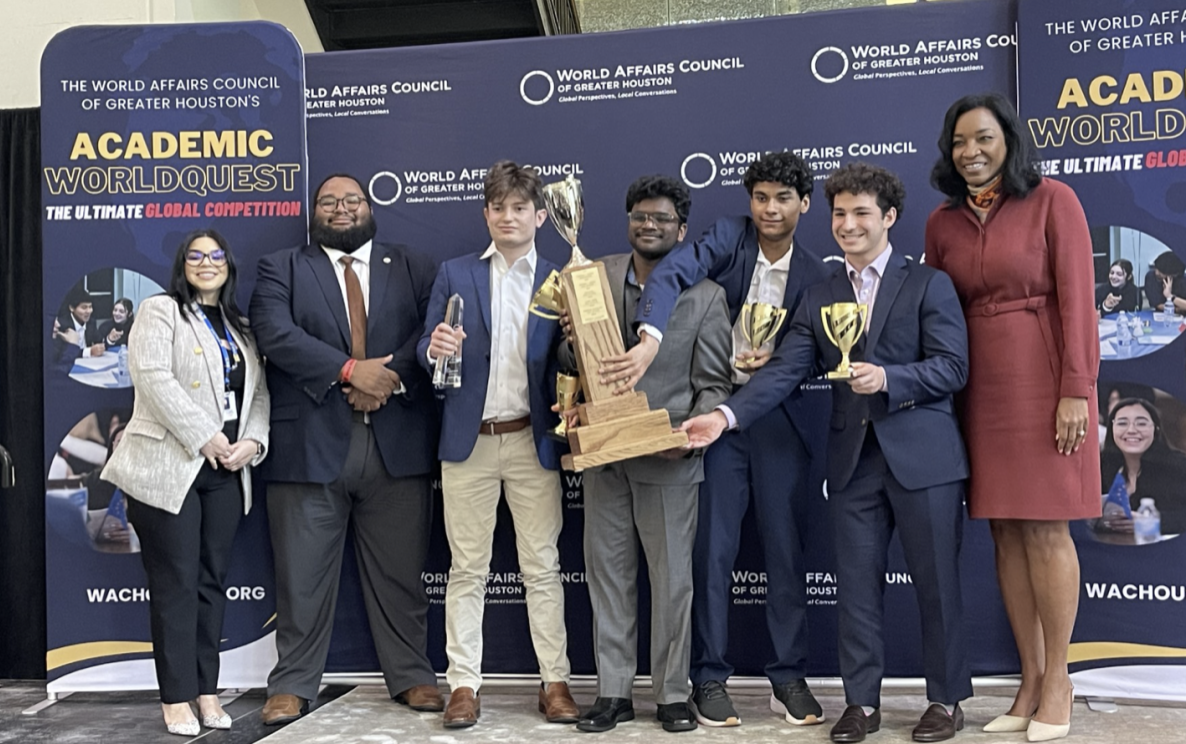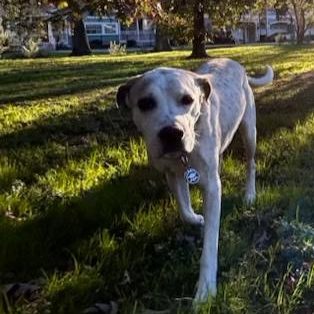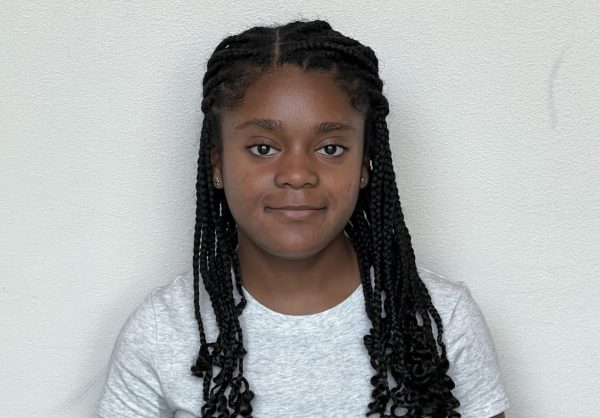On April 4, eight CVHS juniors presented their AP Research and TPSP project posters at Rice University as part of Rice’s Eureka Mentorship program.
The program partners juniors with an undergraduate students at Rice, who help the juniors with their research projects, prepare them for presentations and get their articles ready for publication.
“We were [each] assigned to an undergraduate at Rice who basically helped guide us through this process, like how to do research, how to conduct a survey, how to create an article, how to create a poster, because this is the first time a lot of us are doing research,” Syna Nijhawan, one of the CVHS mentees in the program, said.
Nijhawan focused her project on the levels of risk reduction associated with using mineral and non-mineral sunscreen for people who spend a lot of time outside. For Nijhawan, this project had personal significance, as she spends a lot of time outside doing sports.
“I play competitive golf, and each tournament is just around five hours… and then you’re on the course [for] practicing and stuff before, so the whole day is [almost] seven hours… you could be outside for a good 20-30 hours a week. So you need to make sure you are using the proper kind,” Nijhawan said.
Another junior who was part of the program, Demir Kharaman, comments that he had a great experience in the program.
“Eureka is part of Rice Catalyst, which is a science journal at Rice University. I decided to apply [for the program] with my research on using boxfish biomimicry to design a sustainable school bus,” Kharaman said.
Kharaman’s research project used boxfishes’ body dimensions to design a school bus that would be more aerodynamic, which would decrease the energy consumption and operational costs of the vehicle.
“I was surfing the web for research articles when I came across a study of the aerodynamic properties of the boxfish and the whole field of biomimicry. [It] was revealed to me [that this] was a perfect fit for me, as the boxfish was a surprisingly aerodynamic fish despite having the word “box” in its name,” Kharaman said.
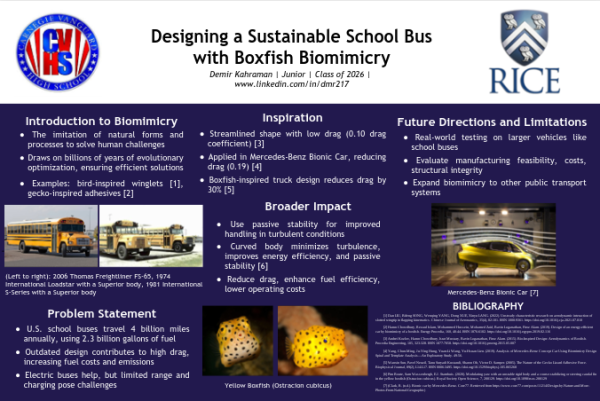
Kharaman also said that he felt that the experience during the day of the presentations at Rice was enjoyable.
“I got to see other students research topics from Bellaire and Cypress Ridge and got to listen to undergraduate Rice students talking about their research [as well],” Kharaman says.
However, like any great achievement, the juniors did face inevitable challenges while creating their projects.
“I think the main challenge [of the project] was trying to get the survey out to a lot of people. Since I was doing a survey analysis, I needed to find a specific group of people… it is a random sample, but it’s still focused more on outdoor participants,” Nijahawan recalled, referring to finding participants who fit the criteria for those frequently needing sunscreen for outdoor activities.
Kharaman, who created actual models of the vehicle for his project, had to create a tangible product that would work with the boxfish body design, which required a bit of technical work.
“The most challenging part of the research process was incorporating the boxfish design onto a 3D school bus model. I had to read articles on the boxfish body structures, dimensions of the fish and body ratios so I could accurately test it on an aerodynamic simulation software,” Kharaman said.
Apart from the challenges the juniors faced, they also gained insight into their fields of study, understanding that there are large gaps in human knowledge that still need to be filled, and that humans don’t always know everything about a subject, even when we think we do.
“One major realization I had was that in medicine, we’ve only scratched the surface. There’s such a huge gap between what we currently know and what we still need to understand including my topic, but also across all areas of health. We often think science has everything figured out, but in reality, we’re only seeing the tip of the iceberg. That really inspired me to keep asking questions and stay curious,” junior Jasmine Ebrahim said.
“My project focused on the connection between blood sugar, cortisol levels, and sleep quality—specifically how these factors affect people with diabetes,” Ebrahim said. “I started noticing how many people, even those living with diabetes, didn’t fully understand how stress and sleep affect their blood sugar. It made me realize there’s a larger gap in general understanding when it comes to health, and I wanted to explore that deeper and bring more awareness to it.”
After the presentations, the juniors will continue to work on their projects and put the final touches on the posters they prepared for the presentation.
“We received feedback from our presentations and now we are finishing up our poster so that it can be put up on the Rice Catalyst Website,” Kharaman stated.
Ebrahim described how her experience with the Rice Eureka Mentorship program has given her many lessons to take with her and how she hopes to positively impact others using the information she had learned from her project.
“I had a really great mentor who helped guide me, gave valuable feedback, and encouraged me to think deeper. I also learned a lot of lessons I can carry into everyday life, like time management, asking better questions, and how to communicate ideas clearly. Presenting my work at the end felt rewarding because I could share what I learned with others and maybe even help someone better understand their health,” Ebrahim said.


